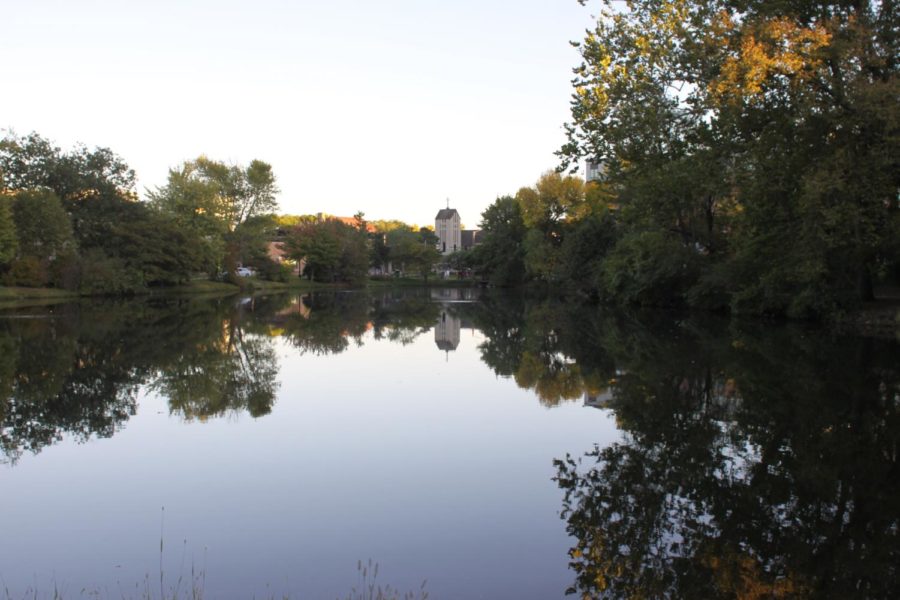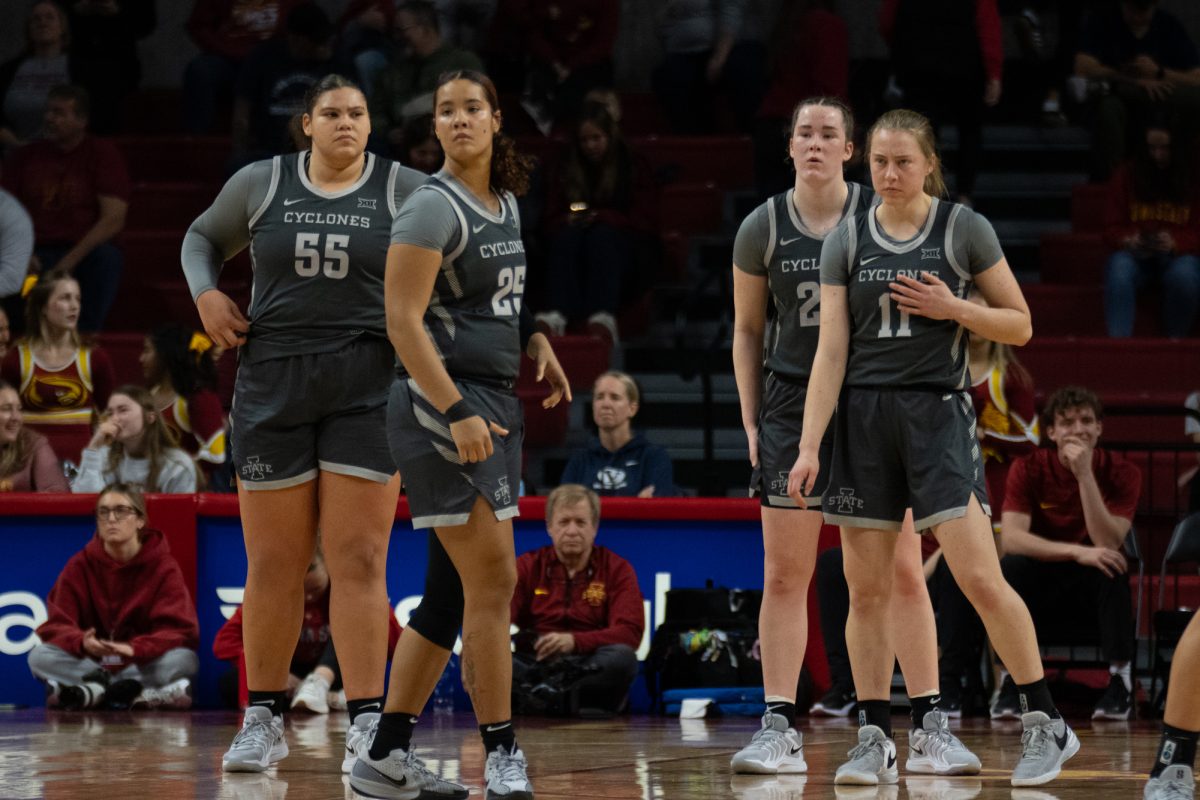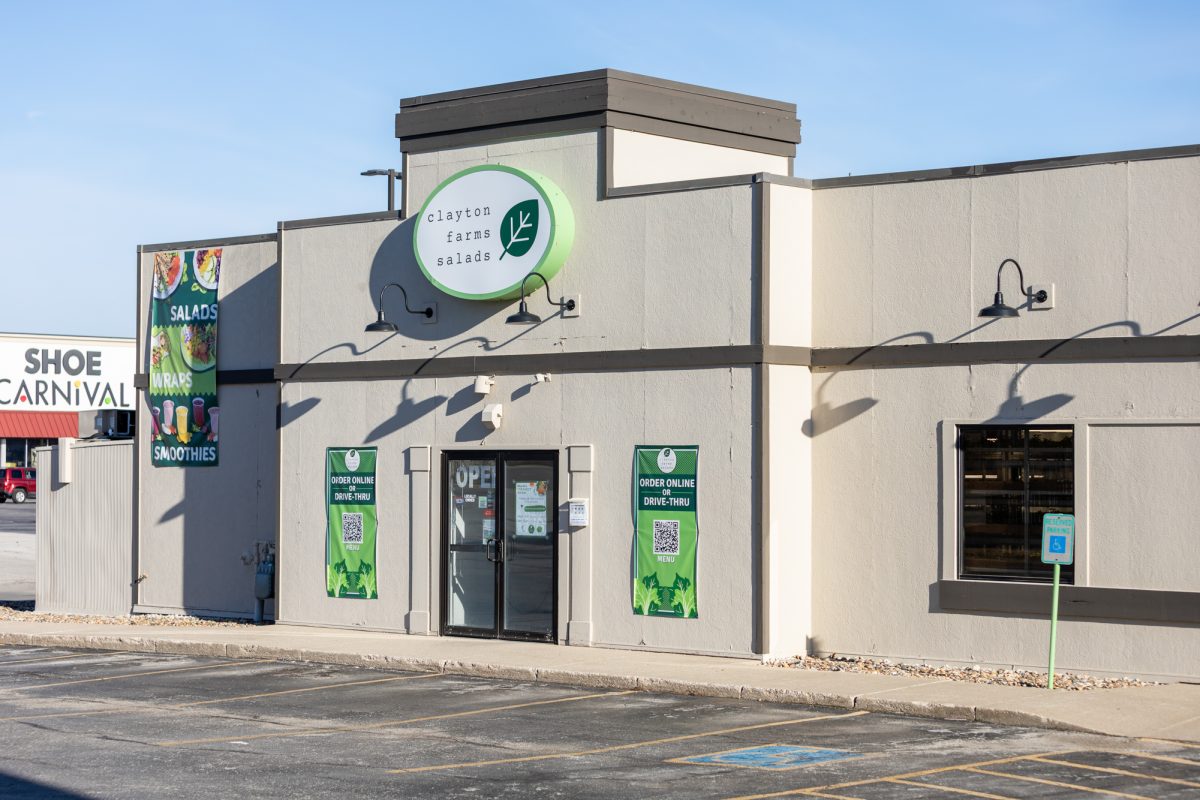Sustainable steps: A look at green efforts in the Iowa State community
January 13, 2018
This series explores how the Iowa State community and its members prioritize sustainability as they interact with resources such as land, water and electricity. ‘Sustainable steps: A look at green efforts in the Iowa State community’ is a collaborative project between the Greenlee School of Journalism depth reporting class and the Iowa State Daily.
A look back at the 2010 flood of Hilton and lessons learned
There had been reports of heavy rainfall through the night of Aug. 12, 2010, and by the first light of day, Squaw Creek and the Skunk River had poured over their banks and were spilling into Ames.
The deluge came too quickly to save an Iowa State icon. Hilton Coliseum was under water.
Cyclone Aide Caroline Quinn could give campus tours in her sleep. Over the summer, she and other Cyclone Aides facilitate orientation and Destination Iowa State by giving tours, working with families of new or potential students and serving on information panels. This leaves for long and busy days in the summer, going from 7 a.m. to midnight, but Quinn doesn’t mind. She says she enjoys sharing her love for Iowa State.
Quinn, a junior in marketing, and her Cyclone Aide partner navigate families all over campus. When it’s time for lunch, they lead groups from the Memorial Union to the Union Drive Community Center. Their route of choice is to circle Lake LaVerne to show off an iconic scenic spot on Iowa State’s campus. Or at least what is supposed to be a scenic spot.
“We noticed [Lake LaVerne] really builds up with algae over the summer, it was really green and super gross,” Quinn says. “It just got worse and worse.”
Once as Quinn led families out of the Memorial Union to Lake LaVerne, she overheard a voice saying, “Wow that lake looks so ugly.”
With a film of green covering the lake, Lake LaVerne had seen better days. Quinn didn’t know what to say, in silent agreement with the voice.
Thirty-six thousand students can make a lot of steps across the Iowa State University campus, but perhaps the steps they take that will leave the most impact are their carbon footprints.
With the student population increasing at such a rapid pace over the years, it’s essential that this surplus of students have a place to live throughout their college career. Because of all of the necessary housing, some might think that monitoring the carbon footprint of the university’s housing can be easily overlooked.
What’s in the water? A look at Ames drinking water
It’s the most common advice to staying healthy. Doctors, coaches and even your parents probably encourage you to drink more water. Yet, most people don’t think twice about where their water comes from or what chemicals are added to it.
Lyle Hammes, superintendent of the Ames Water Treatment Plant, explained how the city purifies the water that comes out of your kitchen sinks and why each is an important additive. Numbers are shown relative to what is in a liter of water to put values in perspective.
Student seeks to impact lives through urban agriculture
More than 5,000 students are enrolled to get their undergraduates degree from the College of Agriculture and Life Sciences at Iowa State University, making it one of the largest programs nationwide. But, what many people do not know is, even on campus students practice their knowledge with the Good Earth Student Farm. The College of Agriculture and Life Science, otherwise known as CALS, provides good farmland to students to practice with real life situations.
An active member of the ISU Good Earth Student Farm’s executive board, Laura Irish, is a graduate student in horticulture. Although studying horticulture excites her, she is more eager to begin the next steps in her life. She is preparing to take on a career where she will take her knowledge, help people, and do something beyond just herself … this task is bringing horticulture and agriculture to urban areas.
“Horticulture keeps you in the science, but sustainable agriculture teaches more about social aspects of it,” Irish said. “And that’s the cool part about it: when it impacts people’s lives.”
The strength of Iowa’s native roots
Iowa was once quilted in tall green grasses and sprinkled with colorful wildflowers, waving back and forth in the wind, which swept across the open plain. Then the land began to change.
The first changes to the land accompanied the first settlers in the 1830s. The rich, fertile soil was upturned and seeds were sown. The natural prairies slowly began to disappear, replaced by small fields.
As word of Iowa’s rich soils and bountiful harvests spread, more people flooded into the state, increasing the demand for food, and the small fields grew. Where the tall native grasses once grew undisturbed, corn and soybeans are cropped into perfectly straight, endless rows.
Today, 85 percent of Iowa’s land is farmed and the lush grasslands have all but disappeared, but they’re not the only thing to have vanished.







